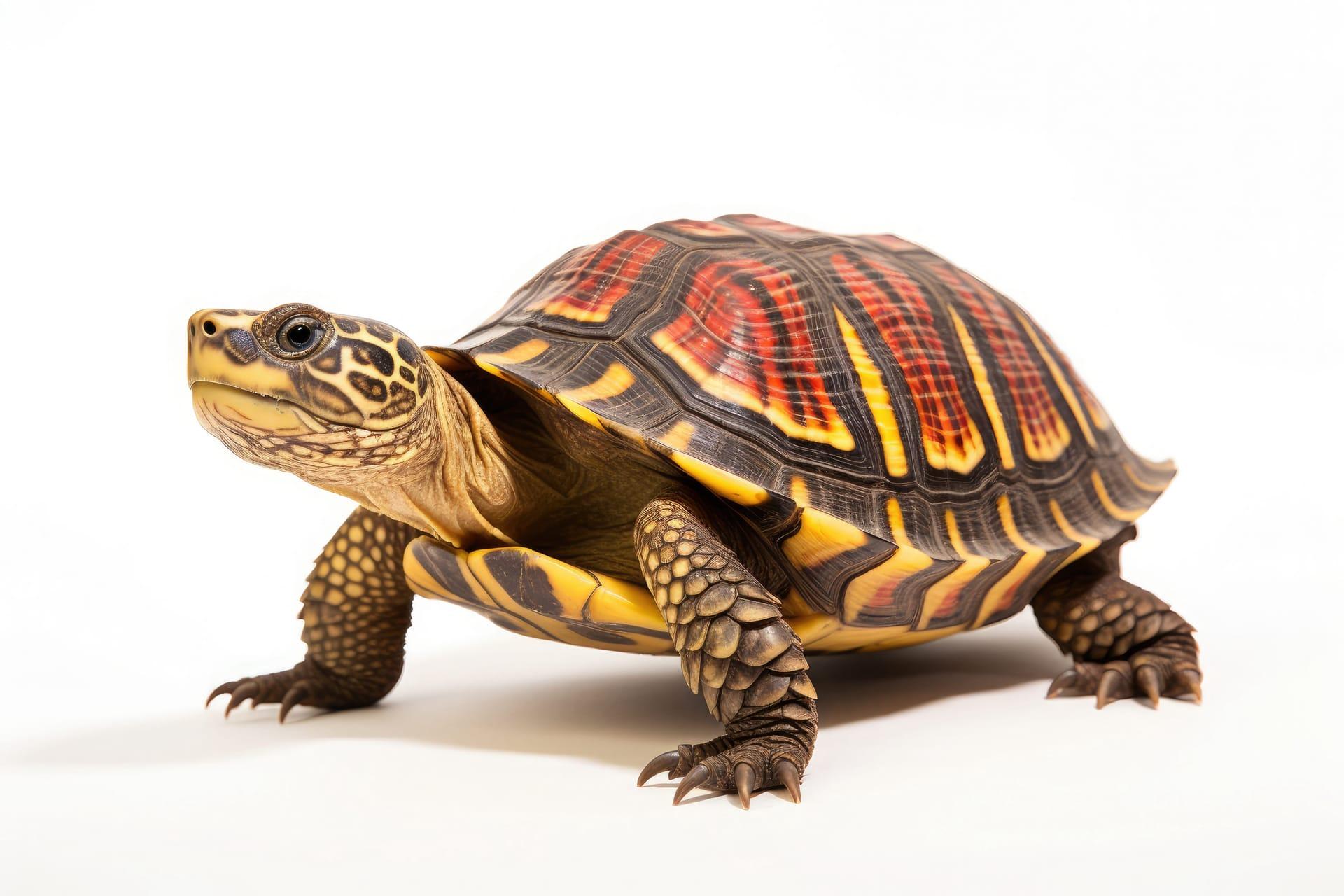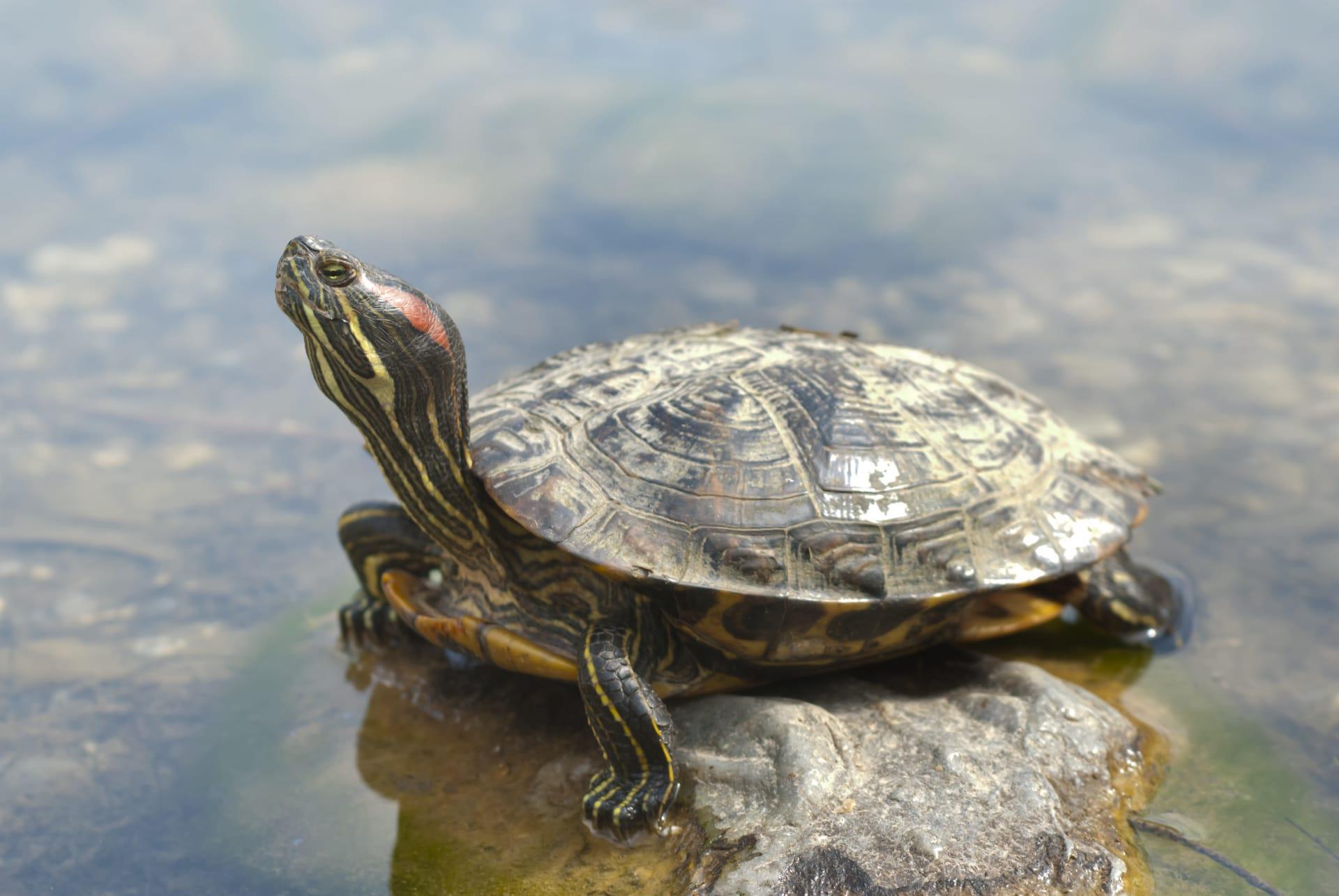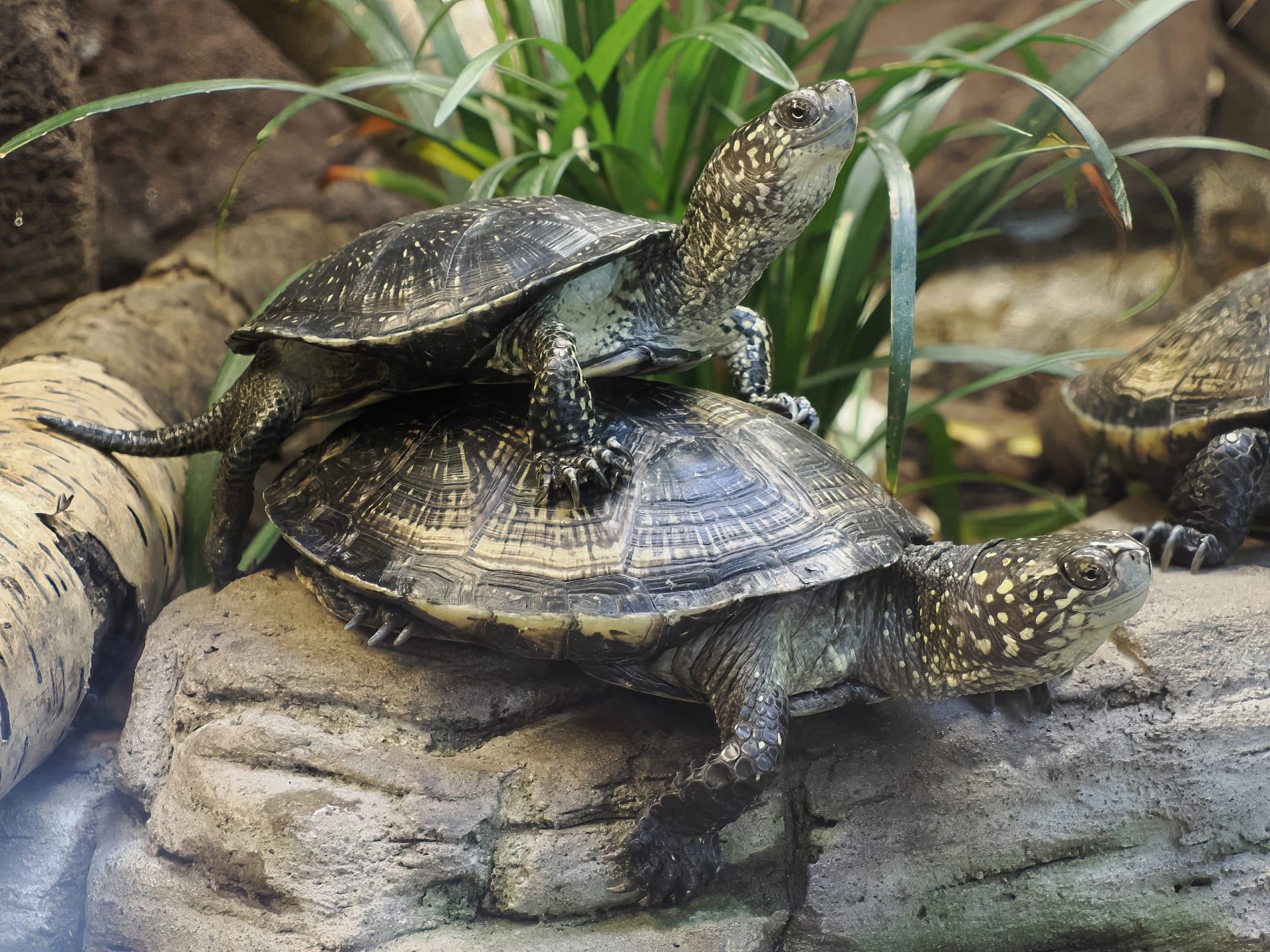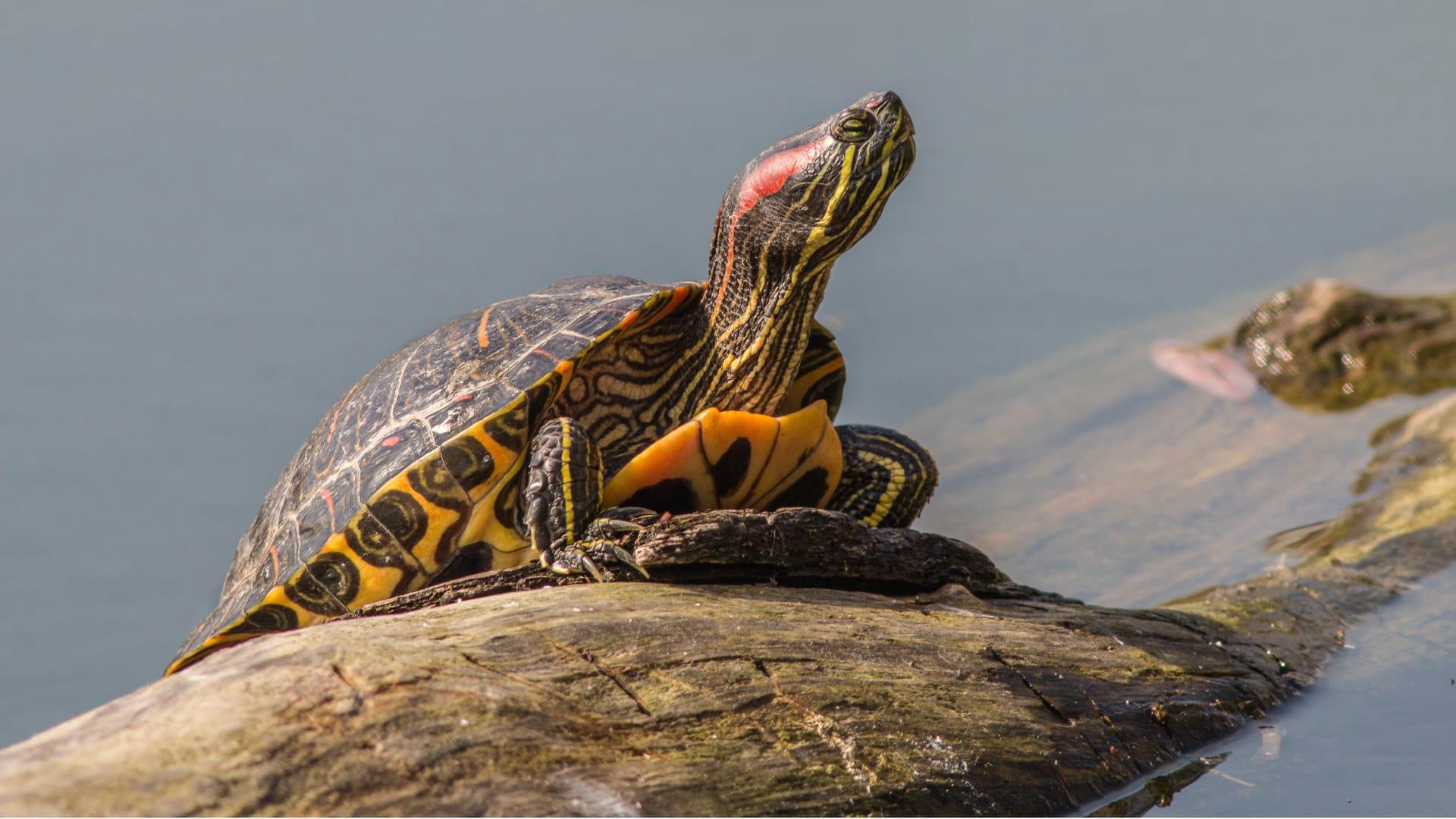Painted Turtle
- Home /
- Mini Encyclopedia /
- Animal /
- Painted Turtle
1
The Painted Turtle, scientifically known as Chrysemys picta, belongs to the family Emydidae, which includes various species of turtles. This species is further divided into four subspecies based on slight variations in their appearance and habitat preferences: the Eastern Painted Turtle (C. p. picta), the Midland Painted Turtle (C. p. marginata), the Southern Painted Turtle (C. p. dorsalis), and the Western Painted Turtle (C. p. belli). Each subspecies exhibits unique marking patterns and coloration, with vibrant reds, greens, and yellows adorning their shells and bodies.
Painted Turtles are widely distributed across North America, with their range extending from southern Canada to northern Mexico. The Eastern Painted Turtle inhabits the eastern United States, particularly around the Great Lakes and the Atlantic Coast. The Midland variety is found in the Midwest, while the Western Painted Turtle stretches from the Rocky Mountains to the Pacific Coast. The Southern Painted Turtle, with a more limited range, is primarily found in the southeastern United States. These turtles favor freshwater habitats, including ponds, lakes, marshes, and slow-moving rivers, where they can often be seen basking on logs or rocks.

2
Question: Do Painted Turtles change shells as they grow, like hermit crabs?
Answer: Contrary to popular belief, Painted Turtles, like all turtles, do not change shells. Their shell is a part of their body, growing with them throughout their life. It's made of bone covered by scutes, which are keratin plates. As the turtle grows, new scutes form at the edges of the existing ones, allowing the shell to increase in size. This process is gradual, and the rate of growth varies with factors like diet, habitat, and overall health. So, while a Painted Turtle's shell will become larger as it matures, it remains the same shell that the turtle was born with.

3
Painted Turtles have adapted remarkable survival strategies to thrive in their aquatic environments. One key adaptation is their ability to hibernate underwater during winter months. They do this by burying themselves in mud at the bottom of lakes or ponds, slowing their metabolism dramatically. This adaptation allows them to survive in regions with cold winters, as their body processes slow down to conserve energy when food is scarce. During this period, they rely on stored fat reserves and absorb oxygen from the water through their skin.
Another survival strategy is their ability to regulate body temperature through behavioral means, known as thermoregulation. Painted Turtles are ectothermic, meaning they rely on external heat sources to regulate their body temperature. They bask in the sun on logs or rocks to warm up and increase their metabolic rate, which is crucial for digestion and other bodily functions. Conversely, they retreat to the cooler waters or shaded areas when they need to cool down. This behavioral thermoregulation is vital for their survival, as it helps maintain their body temperature within an optimal range for physiological processes.

4
In the ecosystem, Painted Turtles play a significant role in maintaining the balance of their aquatic habitats. They are omnivores, feeding on a mix of plant and animal matter, including algae, aquatic plants, insects, and small fish. This diverse diet helps control the populations of their prey and contributes to the health of their ecosystem by aiding in nutrient cycling. Their feeding habits help keep water bodies clean by consuming decaying material and preventing overgrowth of certain aquatic plants and algae.
Painted Turtles also serve as prey for a variety of animals, making them an integral part of the food web. Predators like raccoons, foxes, birds of prey, and large fish prey on juvenile turtles, influencing turtle populations and the dynamics of the ecosystem. Additionally, their eggs provide food for mammals and birds. The presence of Painted Turtles in an ecosystem indicates a healthy environment, as they require clean, unpolluted water to thrive. Therefore, their status can be a marker of ecological health and biodiversity.

5
Film: "The Secret Life of Turtles" is a documentary produced in the United States in 2018. It explores the hidden world of turtles, including the Painted Turtle. The film delves into their lifecycles, habitats, and the challenges they face in the wild. It highlights the importance of conservation efforts and provides a captivating insight into the behavior and adaptability of these resilient creatures.
Book: "The Painted Turtle: A Natural History" by John L. Carr, published in the USA in 2021, offers an in-depth look at the Painted Turtle species. Carr, a renowned herpetologist, combines scientific research with engaging narratives to describe the turtle's ecology, behavior, and conservation status. The book is lauded for its comprehensive coverage and accessibility to both scientists and general readers.
Book: "Turtles of North America" by Karen A. Bjorndal, published in the USA in 2020, is a comprehensive guide that includes a section dedicated to Painted Turtles. Bjorndal, an expert in turtle biology, provides detailed information on the species' distribution, habitat, and life history. The book is praised for its thorough research and vivid photography, making it a valuable resource for educators, students, and turtle enthusiasts.